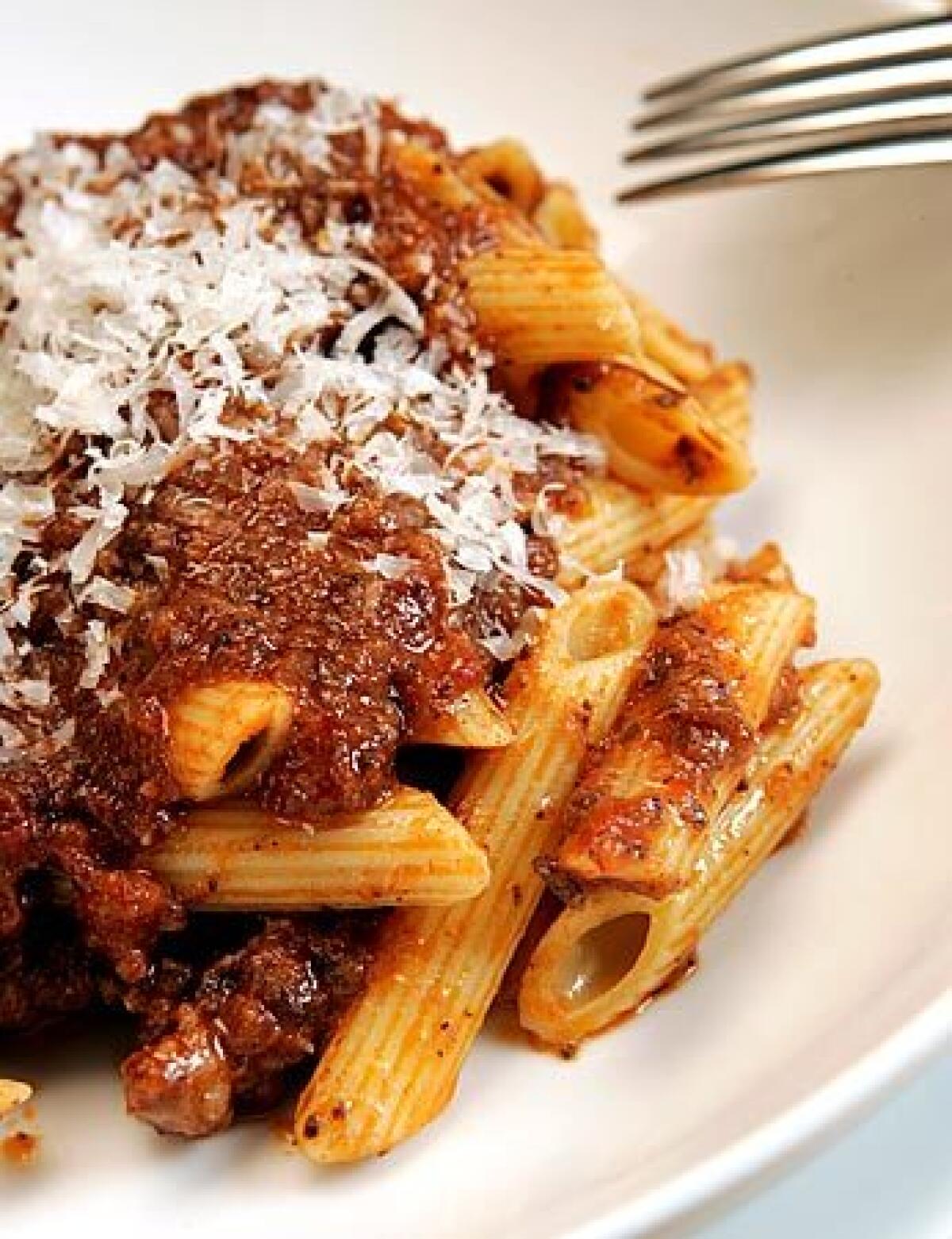Stop and smell the ragu

Sometimes, listening to the pundits and ponderers, I get the feeling that cooking is my duty. Itâs good for the environment; itâs good for my health; itâs good for society; itâs good for my family; itâs good for the small farmers and food producers who depend on my business.
But though all of those things are doubtless true, the one reason for cooking I rarely hear mentioned is that itâs just plain fun.
Granted, thatâs not always true. Tuesday at 8 p.m. after Iâve gotten off the Blue Line hungry and tired from a long day at work, stove-time does not seem remotely recreational, even for me.
But other times it certainly does. Of course thereâs the pleasure that comes from feeding family and friends. But thereâs also the joy that comes with immersing yourself in a project. My brother-in-law works on cars for fun and my brother builds furniture. Me? I cook.
And there are few dishes that are more pleasurable to make than ragĂš. Make no mistake: As wonderful as ragĂš is to eat, itâs just as much fun to fix.
This is fall food at its best: slow cooking that develops deep, harmonic flavors. Itâs the perfect project for a lazy weekend day when you donât have much else planned. Cook a little. Go out to the garden and pull a weed. Come back in and give things a stir. Head for the couch and catch up on the game and your nap. This can go on all day.
RagĂš is sometimes misunderstood. Most simply, it is a meat-based pasta sauce. But the definition goes deeper than that. Many sauces have meat in them, but ragĂšs are based on meat. The juices of the meat that has cooked in them are fundamental to the sauce. Thatâs the reason old-time East Coast Italians refer to ragĂšs as âgravy.â
Theyâre not necessarily tomato-based sauces, either. In fact, the most classical version of the best-known ragĂš, the one from Bologna, can be made with either no tomato or very little. Very delicate, it is, with milk and veal.
Building a dish
âDelicateâ is not exactly a word I would choose to describe my favorite ragĂš -- based very loosely on a recipe by Jeanne Carola-Francesconi in her classic âLa Cucina Napoletana.â This is a powerful, deeply flavored sauce built on long, slow cooking. Oh, and four types of pork.
Dishes like this are constructed more than they are cooked. No slap-dash sizzle-and-deglaze here. Each step must be given the time it deserves. But at the end it all comes together with an almost orchestral power.
Start by sautĂŠing the soffrito -- a chopped paste of pancetta, prosciutto, onions, parsley and garlic. Add a big chunk of pork. Loin is traditional but I think the loins we get in this country are just too lean for braising -- youâre better off with a hunk of pork shoulder or butt. If it comes with the bone, remove it and tie the roast into a uniform shape. Iâve also made this with meaty pork country-style ribs and though they cook a bit more quickly, theyâre really good.
Brown the meat slowly. Itâll take an hour to an hour and a half. Add about a half-bottle of red wine and continue to cook, turning the meat whenever you have the energy. The meat will slowly braise and the wine will reduce to a thin, intensely flavored syrup. Count on another hour to an hour and a half.
Now itâs time for the tomato paste. This is a key step and not to be ignored because of silly prejudice. Too often, tomato paste is regarded as a bad cookâs crutch, but when it is handled correctly, it adds real depth to a ragĂš. The trick is to add it slowly, stirring it into the sauce and letting it caramelize and brown thoroughly. The color should be brick, not bright red.
A tender roast
Add more tomatoes and keep stewing until a carving fork slides easily into the meat. You want the roast to be almost shreddable. This can take a couple of hours, and remember that the meat wonât become tender all over at the same time -- check in several places to make sure itâs thoroughly done.
When the roast is cooked, remove it from the sauce and set it aside. In Italy, a ragĂš made this way is usually served in separate courses -- pasta with sauce first, then the meat as a main course, usually served simply with some kind of complementary vegetable dish (Iâve always loved the term contorni -- loosely translated, a vegetable dish that fits the flavor contours of the main course). You want something a little bitter to offset the richness of the meat, maybe braised broccoli rabe, or mustard or dandelion greens?
But wait, the sauce isnât done cooking. Thereâs still one more pork to go. Crumble some good fennel-flavored Italian sausages into the sauce. Slit and remove the skins and squeeze small chunks between your thumb and forefingers to flatten them slightly. After this has cooked slowly for about an hour, the dish should be deep, dark and ready to serve.
Or not. At this point you can also refrigerate it and reheat it gently when you want. Maybe after the game. Or after your nap. Whichever comes first. Relax, itâs fall and this is supposed to be fun.
More to Read
Eat your way across L.A.
Get our weekly Tasting Notes newsletter for reviews, news and more.
You may occasionally receive promotional content from the Los Angeles Times.







